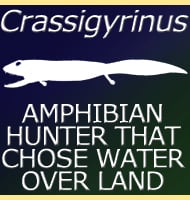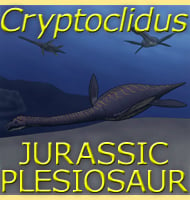In Depth
Vespersaurus is a genus of noasaurine theropod dinosaur that lived in South America during the Late Cretaceous. At the time of its description Vespersaurus is notable for two reasons. First is that the Vespersaurus holotype fossils were discovered in an area that back in the early Cretaceous was part of a huge desert, suggesting that Vespersaurus was more of a desert dwelling dinosaur. Second is that the third toe of the foot is enlarged and bore all of the body weight. This might reflect a specialist adaption to its environment and/or lifestyle.
Further Reading
- A new desert-dwelling dinosaur (Theropoda, Noasaurinae) from the Cretaceous of south Brazil. - Scientific Reports 9(9379). - M. C. Langer, N. Martins, P. C. Manzig, G. S. Ferreira, J. C. Marsola, E. Fortes, R. Lima, L. C. F. Sant’ana, L. S. Vidal, R. H. Loren�ato & M. D. Ezcurra - 2019.









